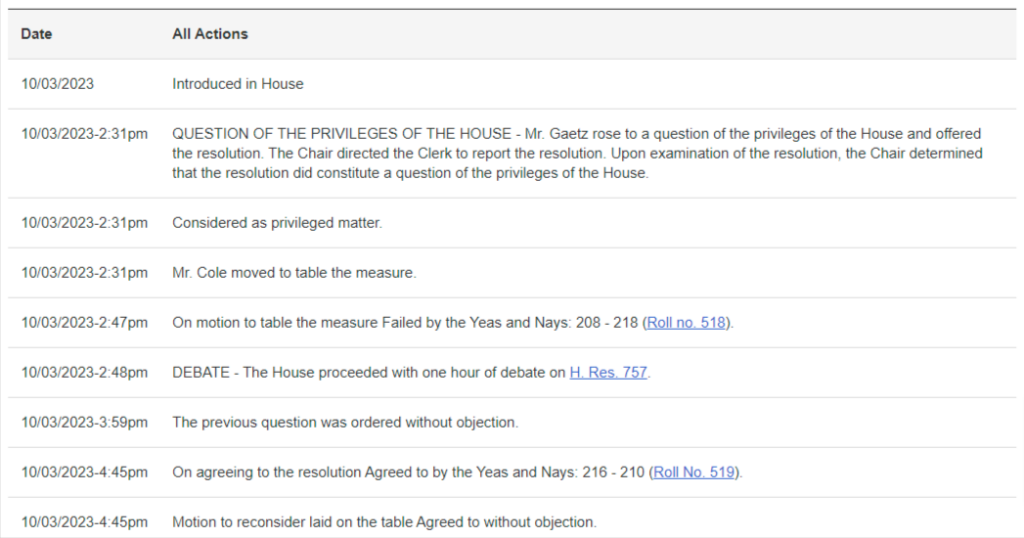
A Speaker of the House vacated as imagined by DALL-E.
The motion to vacate, as it is commonly called, is a House resolution. Any member can introduce it. That has not always been the case, as the Congressional Research Service explains. And quite possibly this rule will be changed in the future.
This resolution declares the Office of the Speaker vacant—nevermind if there is a Speaker alive and performing the duties of position. This resolution was not initially created as a means to boot people from the Speakership, as Dr. Joshua Huder notes. But that is what it has become of late. Such happened to Speaker Kevin McCarthy (R-CA) in October 2023.
Tom Wickham, former Parliamentarian of the House, explains that introducing this type of resolution does trigger any chamber action. Rather, the resolution gets referred to committee —in this instance the Rules Committee— and awaits action.
Now, the legislator who introduced it may come to the floor and activate it by announcing his or her intention to offer this resolution. And if that happens, then this privileged motion must be brought up by the Speaker within two legislative days, and a vote on it may occur. Below you can see the House of Representative’s action on Rep. Matt Gaetz’s (R-FL) resolution “Declaring the office of Speaker of the House of Representatives to be vacant” (H. Res. 757).

Kevin R. Kosar is a senior fellow at the American Enterprise Institute. He worked for more than a decade as a nonpartisan researcher at the Library of Congress’s Congressional Research Service. Kevin also hosts the Understanding Congress podcast and is co-editor of the book, Congress Overwhelmed: Congressional Capacity and Prospects for Reform.
Stay in the know about our news and events.